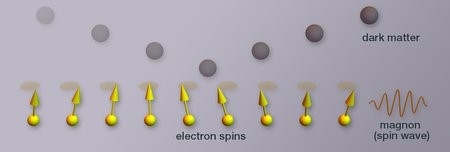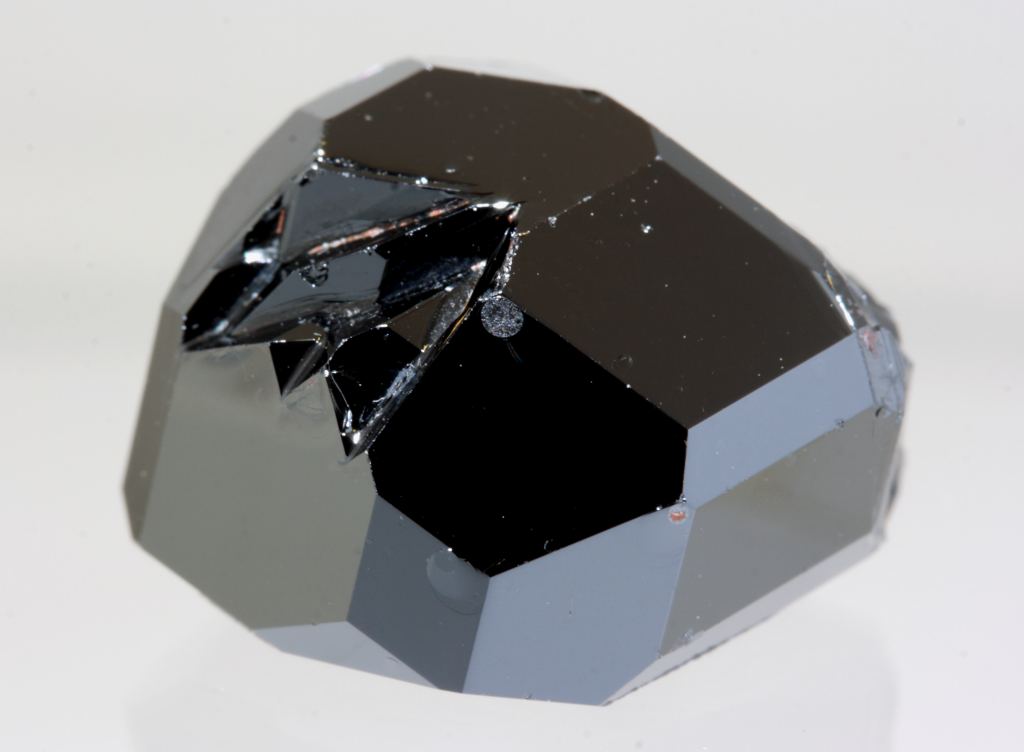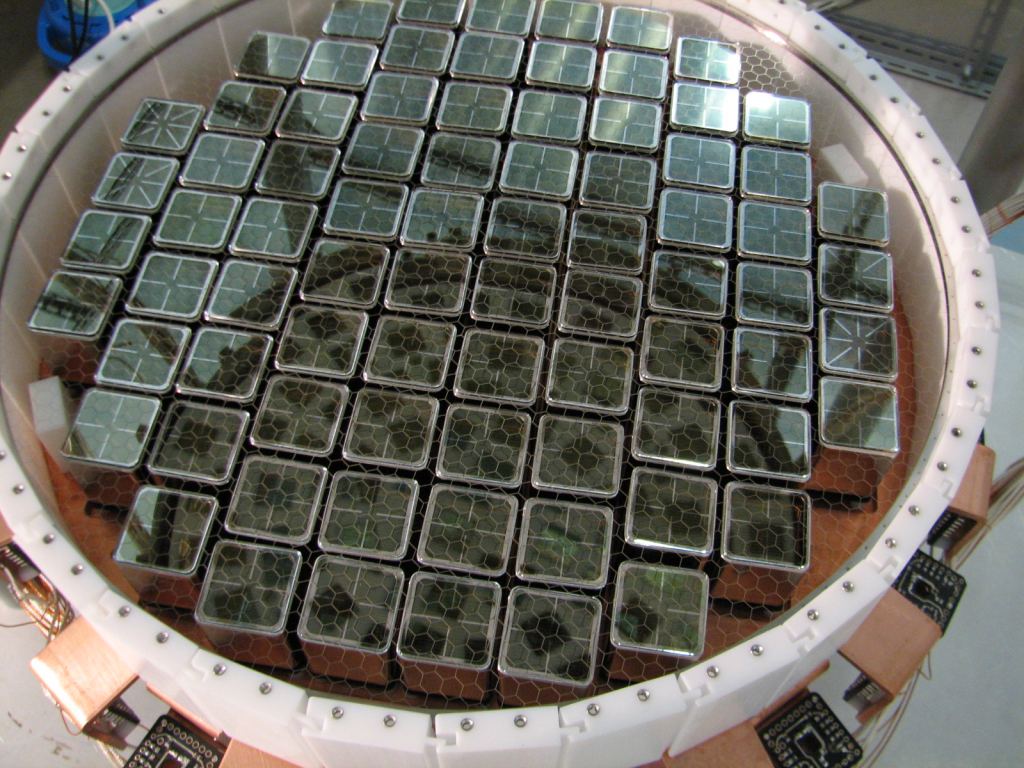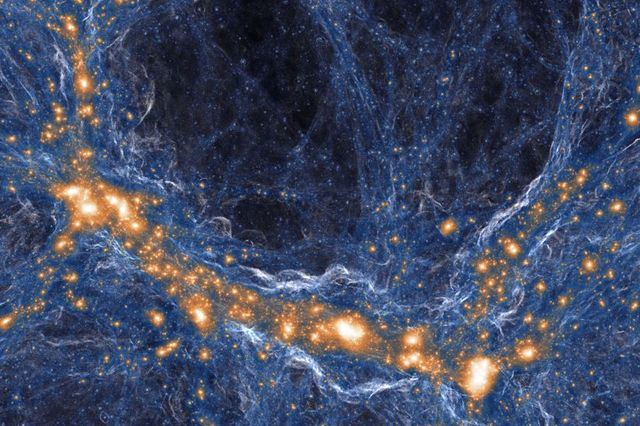Dark matter is one of the least understood aspects in physics. The evidence for dark matter is from its gravitational influence on galactic scales which cannot be explained by the presence of conventional matter. Despite its large gravitational interactions, it is notoriously difficult to learn about dark matter as it does not interact with electromagnetic fields, hence the name of “dark” matter.
But just because it is difficult to get it to interact with anything on the electromagnetic spectrum does not mean it is impossible to detect other feeble interactions it may have. A team of theoretical physicists from Caltech have recently proposed a novel type of experiment that may just hold the key to understanding dark matter with specific types of interactions.
The team is headed by Dr. Kathryn Zurek, a specialist in dark matter physics, who has been actively working on methods to directly detect dark matter for most of her career. One current research path the group has been pursuing is using a special kind of collective excitation known as a magnon.

Credit: Caltech / Zhengkang Zhang
Magnons only arise in crystal lattice structures, and specifically only in those that exhibit “magnetic order”. Magnons can be thought of as the collective action of electron spins in a crystal structure. In specific types of crystals, these electron spins spontaneously line up to form patterns (known as a magnetic order) and begin to act interdependently, leading to what in solid state physics is known as a magnon.
Tanner Trickle, a graduate student in Dr. Zurek’s group and co-author on the paper detailing the experiment, describes the way magnons form in a crystal lattice as akin to a wave in the ocean. A wave’s motion is due to the oscillations of its constituents, the water molecules, just as a magnons motion is due to the oscillations of the electron spins in the crystal.

Credit: Krizu at German Wikipedia, CC BY-SA 3.0
In the paper, the Caltech physicists suggest using yttrium iron garnet (or YIG for short) to search for magnon signals produced by passing dark matter particles. According to Mr. Trickle, there’s a two-fold reason for this choice. First, the physical properties of YIG are well understood, so modeling what might happen when dark matter interacts with the crystal to create a magnon is easier to predict. In addition, YIG itself is relatively inexpensive, as it is widely used in a number of electromagnetic applications, including current state of the art dark matter research.
For now, the experiment is only described in theory. Dr. Zhengkang Zhang, a postdoc and another co-author on the paper, mentions that it could take years, or even decades, to build these experiments and start to take data. Such a long timeline is primarily due to the challenges of measurement, especially two problems in particular.
The first is the sensitivity of the measurement. Everything from defects in the crystal lattice structure of the YIG to passing cosmic rays can impact any measurements on the experiment. This is primarily why current dark matter experiments, such as XENON1T, are located far underground, in order to isolate any potential noise-inducing interference.

Credit: Wikipedia user Jpienaar13 – Own work, CC BY-SA 4.0,
The second is how to actually detect the magnon itself that is produced by dark matter interactions. Sensors for monitoring these kinds of interactions are currently sorely lacking. There is some probability that a magnon might decay into what is known as a phonon, which, in particle physics terms, can be thought of as heat, and can be detected using an ultra-sensitive “thermometer”. However, the team is hoping to explore experimental options that use more novel ways to detect magnon interaction, and particularly the interaction of a single magnon.
The Zurek group works very closely in the space between theory and experiment, and has already started reaching out to potential contacts about how exactly to implement the theorized experiment. However, if and when it does eventually get built, it will probably be built many more times than just once. That is because the two main advantages of this theorized way of using magnons to detect dark matter are the fact that it is both inexpensive and flexible.
As mentioned above, YIG, the primary material used in the experiment is relatively inexpensive, and not much of it is needed to complete an experiment, therefore it can be run on a bench top rather than in a large particle collider or deep underground. The sensitivity of the instruments, and any potential denoising equipment, are likely to be the most expensive part of any experimental setup, and can potentially be reproduced relatively easily once first developed.
Credit: Phystronics_AJ Youtube Channel
They might have to be reproduced because the experiment itself can be set up in myriad different ways. Many potential changes would allow the experiment to test many different types of theories regarding the interaction of dark matter. There are also many different crystal materials that can host magnons, which may lead to other potential interactions that chip away at some of dark matter’s mystery.
Understanding part of that mystery is really what the proposed experiment is trying to do. There is still so little known about dark matter that there is the potential for a fundamental breakthrough in understanding if an experiment can definitively prove that dark matter does primarily interaction through magnons, or some other types of collective excitation. Understanding and manipulating these relatively little understood phenomena might begin to describe some of the “Hidden World” that dark matter hints at.

Credit: NASA, ESA, M.J. Jee and H. Ford (JHU)
And while an actual experimental build might be years away, the way science, and especially theoretical physics, advances is through the collection of ideas. Maybe the fact that this type of experiment is relatively inexpensive can attract the right kind of funding to allow the theory to be put into practice. But until that happens, physicists will have to continue to chip away at understanding dark matter with whatever tools are available to them.
Learn More:
Caltech: Press Release
Caltech / UC Berkley: Original Paper
Symmetry Magazine: Article describing more of Zurek Group’s work

